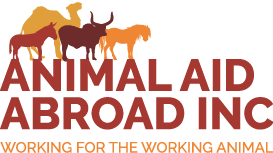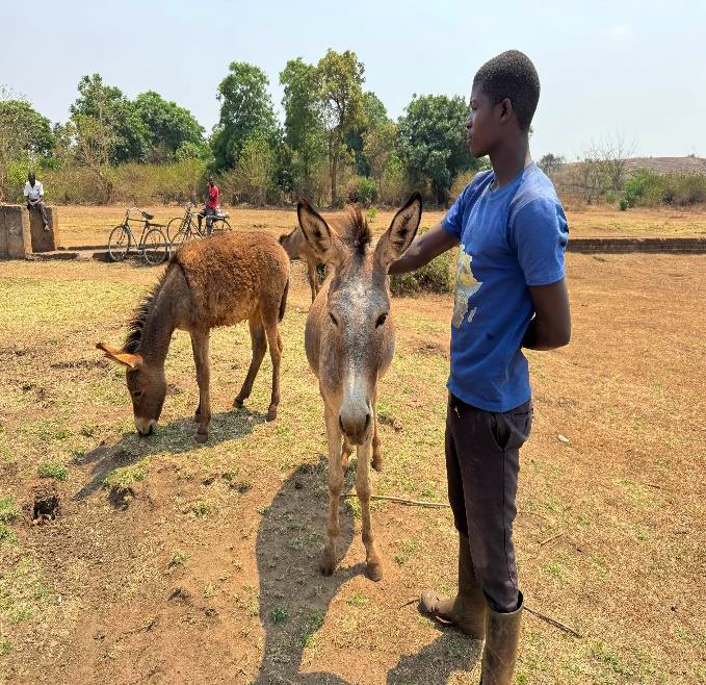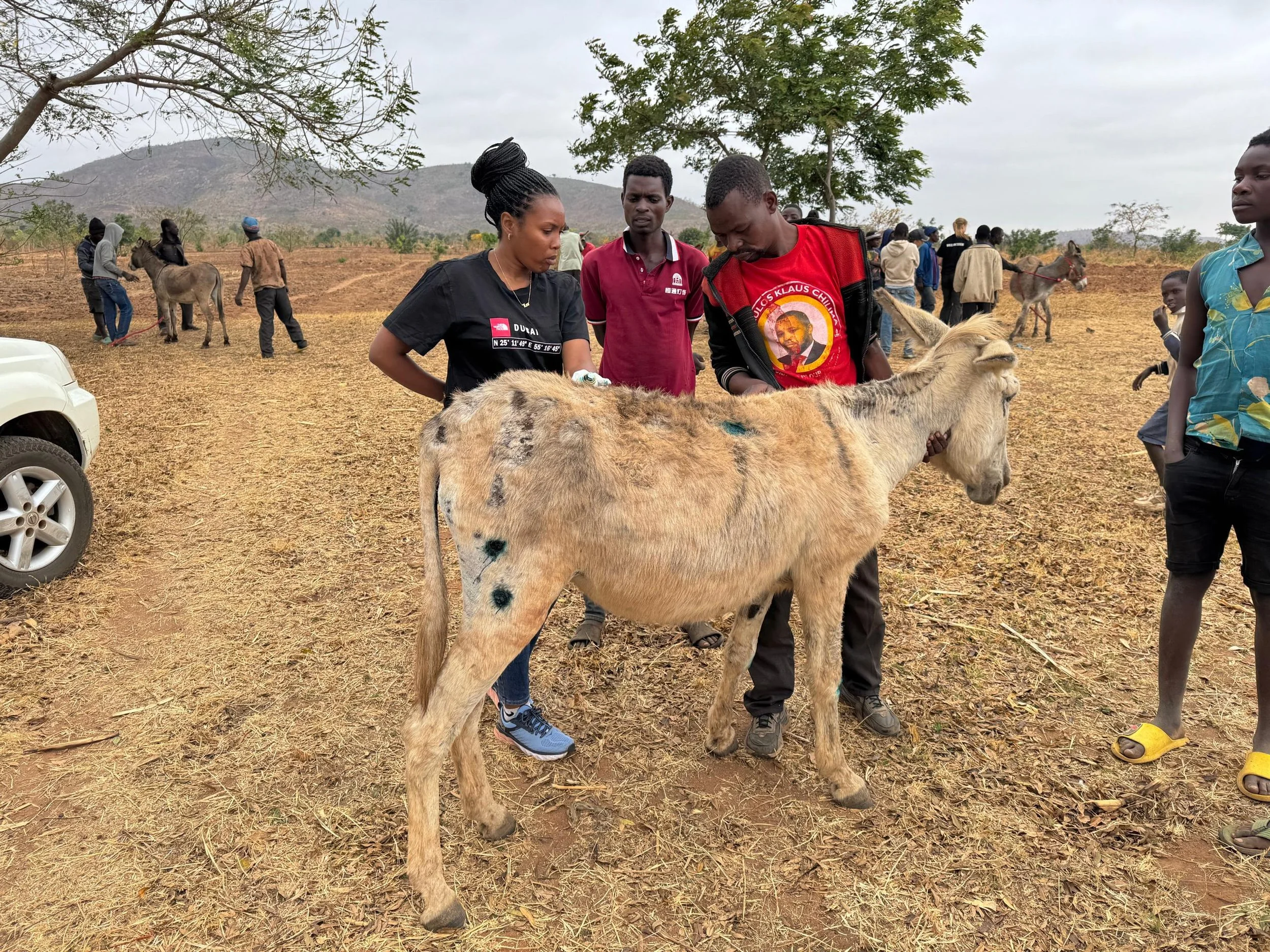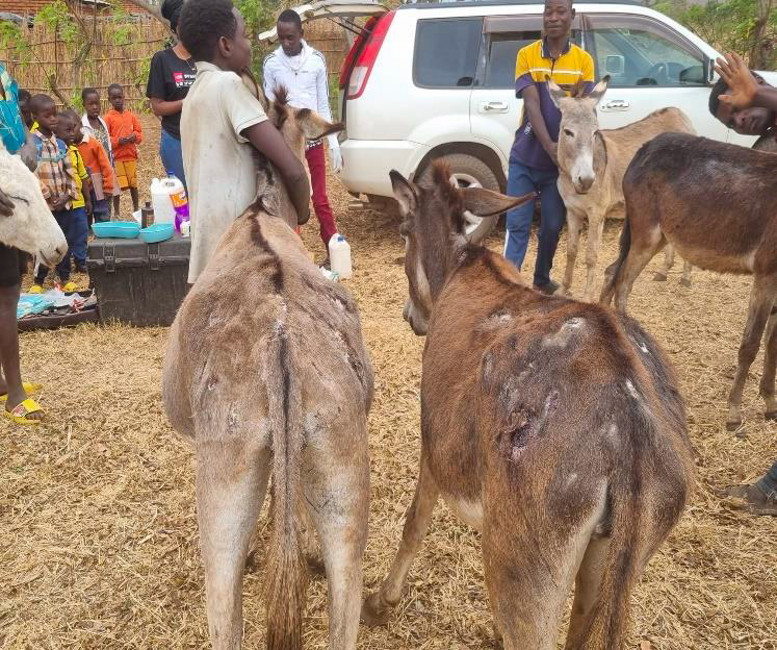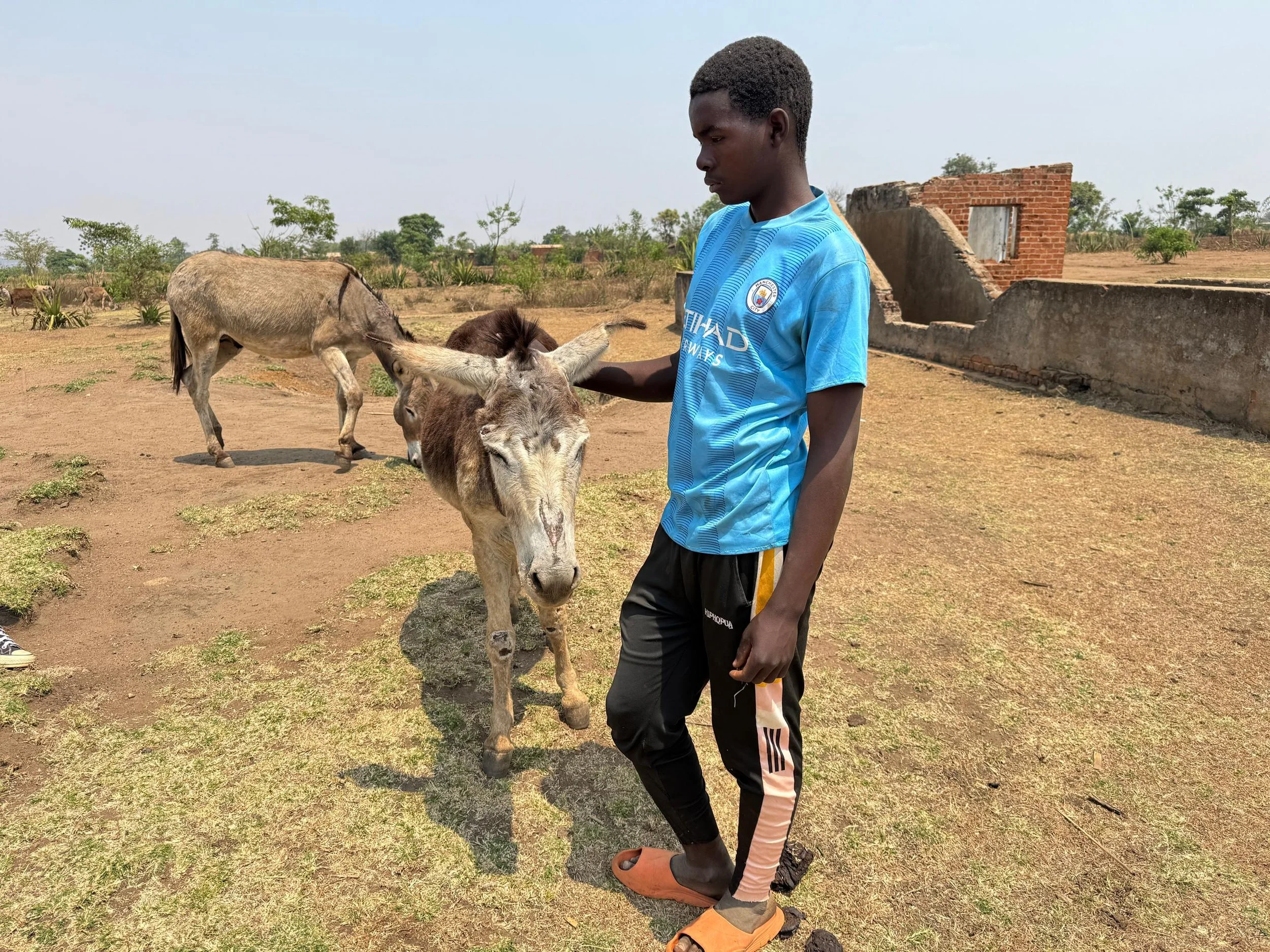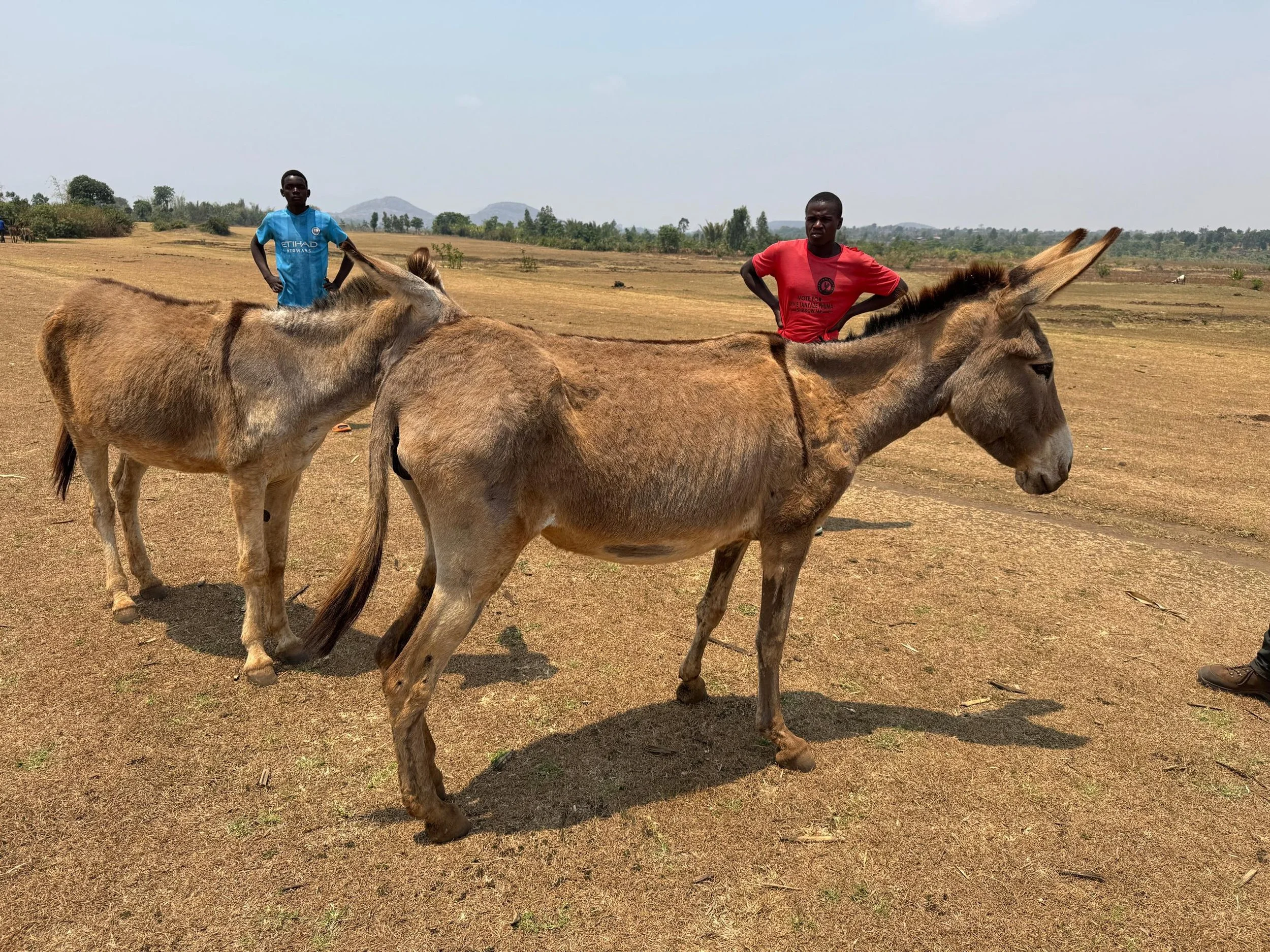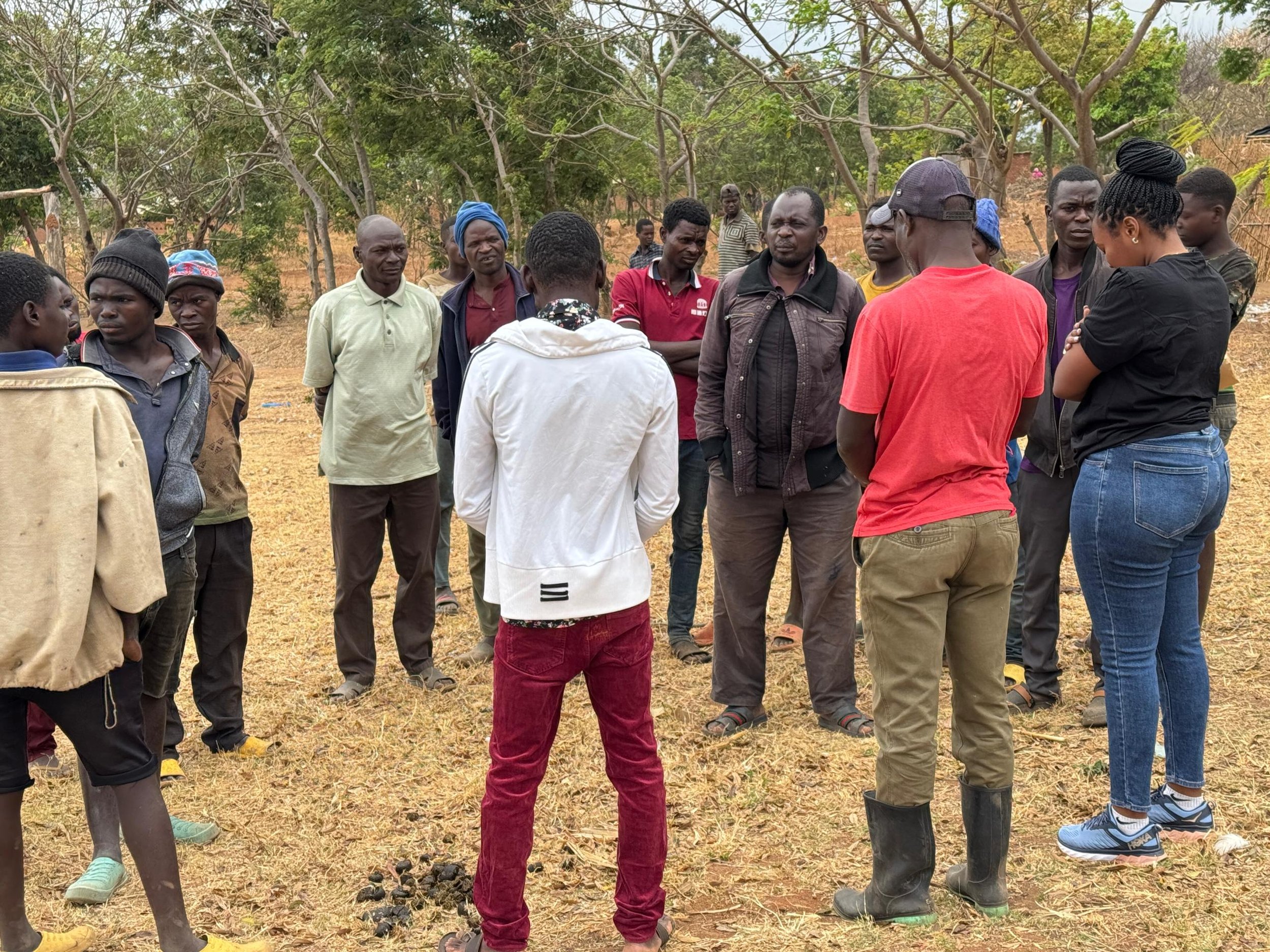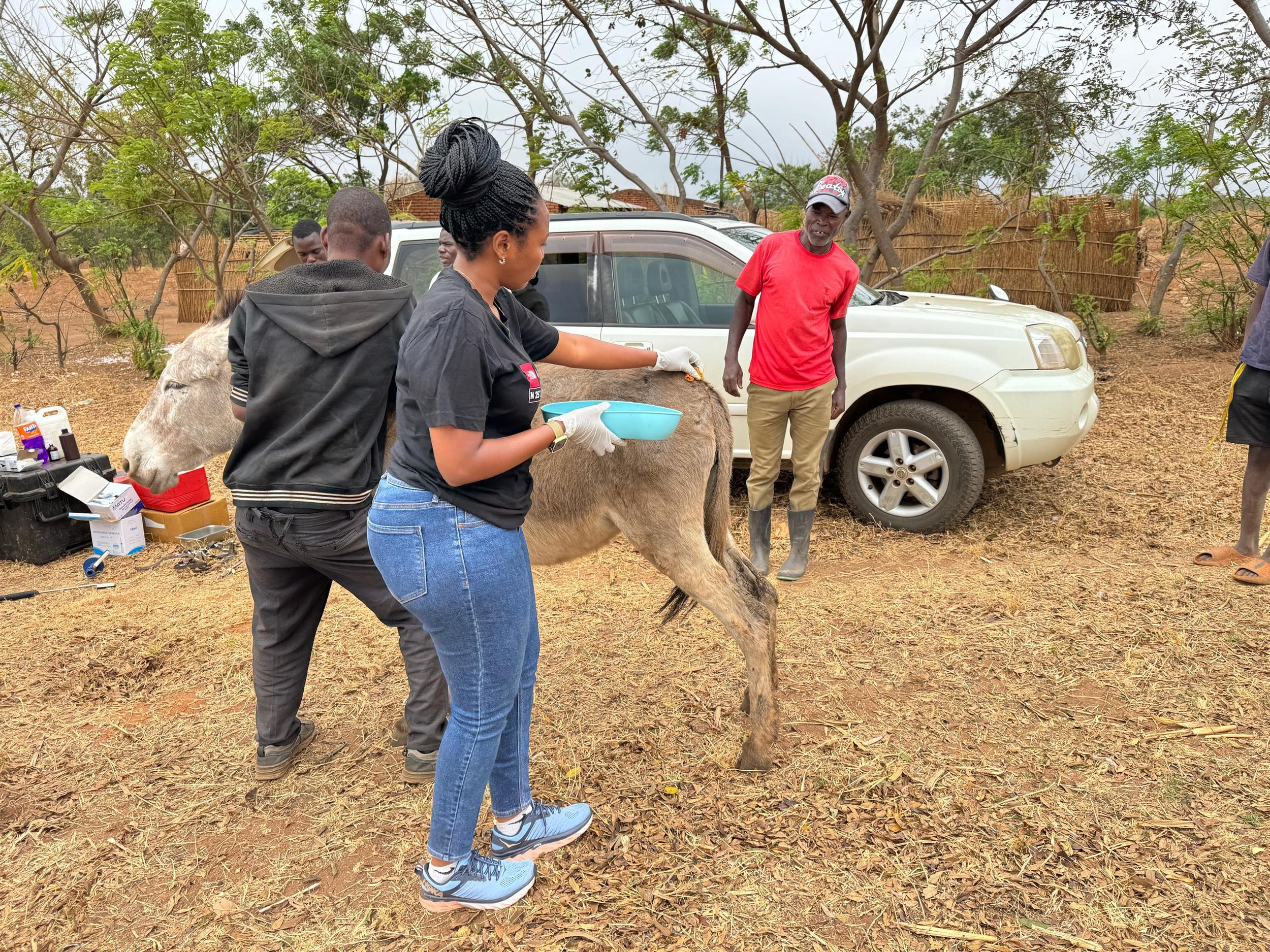Overcoming Challenges to Improve Donkey Welfare in Malawi
Our partner group, the Lilongwe Society for the Protection and Care of Animals (LSPCA), treated an incredible 198 donkeys during September.
Although they faced several challenges, with your support they are enhancing the welfare of working donkeys through essential veterinary care, humane equipment and owner education.
Introduction
With support from Animal Aid Abroad (AAA), the LSPCA team continued its donkey welfare outreach in September, focusing on Mpingu. The team deliberately returned to this area after noticing it had been some time since the last visit. Over the two clinics, a total of 198 donkeys were reached, with 150 treated and 48 physically assessed only.
Scheduling was a challenge this month due to disruptions caused by political rallies and the national elections held in September. Despite these challenges, turnout was strong and the clinics provided both essential veterinary care and valuable education for donkey owners.
A recurring issue observed during this reporting period was the use of poor-quality harnesses and yoke systems, which contributed to many of the wounds and bruises seen. Although hands-on harness and cart repair sessions could not be conducted this month due to logistical limitations during the elections, the clinics emphasised owner training on safer harnessing practices. These sessions are laying important groundwork so that when repairs are carried out between October and December 2025, they will be more sustainable and better understood by the communities.
An owner with his donkey waiting patiently to be seen during the mobile clinic.
Veterinary Interventions
On 30th September, the team held its first clinic in central Mpingu, where 118 donkeys were attended to. The turnout was encouraging, reflecting the community’s interest in accessing veterinary support for their animals.
The visit took place just before the onset of the rainy season - a time when farmers are busy preparing their fields for planting. This period creates a surge in demand for donkey labour, as the animals are used intensively to transport goods, plough fields and carry inputs. The result was evident: many donkeys arrived showing clear signs of exhaustion, including depressed posture, reluctance to move and reduced alertness, alongside fresh wounds and poor body condition.
Veterinary interventions focused on cleaning and dressing wounds, administering antibiotics where required, and providing anti-inflammatory medication to manage pain and swelling. Nutritional and welfare advice was also provided to help strengthen the animals during this demanding agricultural season.
A recurring challenge was the tendency to shift responsibility for donkey injuries. Many owners often blamed the herders or handlers, rather than acknowledging their own role. The team emphasised that while herders may contribute to some of the problems, ultimate responsibility for animal welfare rests with the owners.
To address this, training was provided to the herders, handlers and owners who attended the clinics, focusing on practical skills such as safe handling, early recognition of injuries and exhaustion, allowing donkeys rest during peak work hours, and maintaining carts and yokes through regular checks and repairs. Changing these attitudes and practices will take time, but it was encouraging that participants were open and receptive to the information shared.
A puncture wound on a donkey’s neck.
Two donkeys with multiple wounds and scars from whipping.
The second clinic took place the following day - 1st October - in another part of Mpingu that had not previously been reached by the project. Here, 80 donkeys attended, with 61 treated and 19 physically assessed only. Compared to the visit on 30th September, the overall condition of the donkeys was better, though signs of overworking were still visible. Many donkeys had bruising around the neck caused by poor yoke systems.
One case that stood out was Wathanzi, a donkey with a severely bruised and swollen neck. His wound required thorough cleaning and treatment, and his case was used as a teaching point to demonstrate to owners how poor harnessing and ignoring injuries can worsen donkey welfare. The team strongly advised his owner to rest him and avoid further work until the wound healed, and pairing him with donkeys of similar height to prevent strain.
Close-up of Wathanzi’s face showing vivid scars and wounds.
Wathanzi’s neck showing extensive bruising caused by yoke use.
Wathanzi’s neck following treatment.
LSPCA staff advising Wathanzi’s owner on corrective measures, emphasising the importance of proper handling and workload management.
Another notable case involved an older donkey, Abeta, who was estimated to be over 15 years of age. She had lost most of her teeth, and the few remaining were severely worn, suggesting she could be significantly older than estimated. This dental condition likely contributed to her poor body condition score, as it limited her ability to chew and properly digest food.
Abeta was also found to be pregnant, which added to her nutritional needs and increased her vulnerability. The team advised the owner to monitor her health closely, ensure adequate rest, and provide easy-to-chew, nutrient-rich feeds in order to support both her health and the wellbeing of her foal.
Abeta showing a poor body condition score. The owner appears attentive and engaged, reflecting willingness to follow advice and improve her welfare.
Harnesses and Cart Repairs
During both clinics, it became evident that many welfare issues stemmed from the community’s limited awareness of harnesses as a safer alternative to traditional yoke carts. Donkeys continue to experience bruising, restricted movement and hidden injuries from overwork, even when obvious wounds are not present, as owners often push animals hard in preparation for the rainy season.
Although hands-on harness and cart repair sessions had been planned for this period, they were postponed due to Malawi national elections, which caused road blockages, limited mobility and safety concerns around large gatherings. In the meantime, the team focused on educating owners on how to reduce harm from yokes and carts by repairing equipment, monitoring pressure points and regularly checking donkeys’ coats for early signs of injury, while introducing the concept of harnesses to improve welfare in the longer term.
Challenges and Way Forward
The main challenges during this reporting period included:
A higher number of donkeys presenting with wounds linked to beating and overwork, as farmers prepare for the rainy season.
Injuries caused by poorly designed or badly maintained harnesses and yoke systems.
Disruptions from the national elections, which limited farmer participation and reduced logistical capacity.
To address these, the team provided immediate veterinary care for urgent cases, integrated practical training sessions alongside treatments, and postponed harness repair activities to ensure they can be carried out fully and effectively in the next reporting period.
The ways forward include:
Visit targeted areas to repair carts and introduce improved harnesses, demonstrating good animal welfare practices as examples for the community.
Maintain ongoing interaction with donkey owners to understand their challenges and encourage adoption of better handling practices.
As the rainy season approaches, provide guidance on workload management, ensuring donkeys are not overworked during peak agricultural activities.
Continue scheduled harness repair and replacement activities to sustainably improve donkey welfare.
Thank you to all our donors and supporters for being a vital part of improving the lives of these working donkeys in Malawi.
